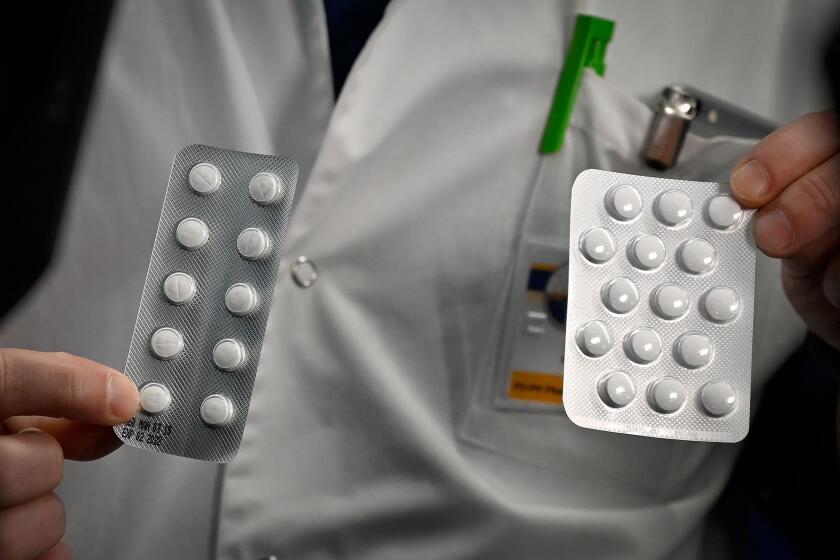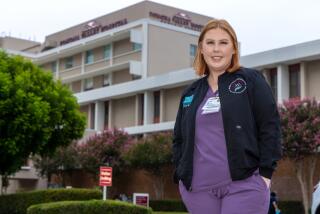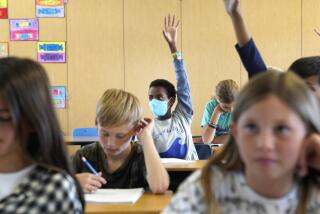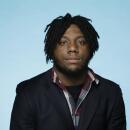This is how we’re getting extra doctors and nurses to fight coronavirus
- Share via
The surgeons in training puzzled over a machine that looks like an overly complicated landline phone plugged into aquarium tubing. They’d seen it hooked up to numerous patients, but its workings were a mystery.
Normally, operating that intravenous infusion pump would be none of their business.
The circumstances are not normal. Not for these surgical residents at Keck Medicine of USC, and not for any of the nation’s healthcare professionals, who are on the front lines of fighting the coronavirus pandemic, which has killed more than 7,000 Americans.
California’s already troubled healthcare system is mobilizing for an unprecedented expansion. More than 1,900 COVID-19 patients are already stressing California hospitals’ capacity, and the state is adding as many as 50,000 beds — in wards as well as in makeshift spaces, such as convention centers and sports arenas — to prepare for an expected wave of critically sick people.
That urgency has forced the healthcare industry to radically reshuffle and expand its niched and hierarchical workforce, matching specialists, nurses, aides, technicians and family doctors with new responsibilities, or old ones they may have forgotten.
That’s why the USC residents last month were learning the actual keystrokes of a machine they normally would glance at but seldom touch. And it has been humbling.
“None of us had any clue on how to actually use that machine,” said chief resident Dr. Christopher Foran, 34. “I think everyone walked away with a lot of valuable knowledge.”
The latest maps and charts on the spread of COVID-19 in California, including cases, deaths, closures and restrictions.
Similar scenes are playing out across Southern California and nationwide as known U.S. cases of COVID-19 soar above 200,000, taxing a healthcare system already burdened with staff shortages and spiraling costs.
Hospitals have three broad strategies, according to health workforce experts: reposition existing staffers, keep their staffs intact by keeping the workers healthy, and hire reinforcements.
But each sets off a complicated chain reaction that ripples through the organization.
If a physician who manages general care on a ward moves to intensive care, who supervises the ward? Can outpatient staffers, or the facilities themselves, be repurposed? Who supervises those taking on new skills or refreshing old ones? How many physician assistants or nurse practitioners can be supervised by one doctor — or do they need a doctor’s supervision at all? Who is qualified to draw blood? Take vitals? Who knows how to triage patients?
“The challenge is that the surge [of new patients] is happening very quickly in some spots,” said Edward Salsberg, director of health workforce studies at the Fitzhugh Mullan Institute for Health Workforce Equity at George Washington University Milken Institute School of Public Health. “It’s not something that we have the luxury of weeks or months to prepare for. Those decisions at the front line are really critical, and that’s where I think some of the task-shifting, if you’re a large delivery system, makes a lot of sense.”
Medicines designed to treat COVID-19 won’t be available for months, so doctors are looking to drugs already approved for treating other diseases.
Gov. Gavin Newsom this week issued an emergency order and created the California Health Corps to enlist the help of more medical professionals to provide needed care. He also directed the Department of Consumer Affairs and other agencies to work with the state’s health-profession credentialing boards to waive some license requirements and loosen restrictions on tasks those professionals can perform. Many of those “scope-of-practice” rules are among the most rigid in the country, with proposed changes in the state Legislature over the years drawing considerable debate and little action.
“I think we’re flying the plane while we’re building it,” said Joanne Spetz, a professor at the Philip R. Lee Institute for Health Policy Studies at UC San Francisco who helped craft the recommendations that resulted in Newsom’s order. “Every state has different regulations around the scope of practice of health professionals, and those scope-of-practice regulations dictate essentially who can do what and under what circumstances.”
In some states, vocational nurses may administer drugs via an intravenous tube. In California, they can’t, Spetz said. Loosening that rule would free up registered nurses to perform more urgent tasks.
Among those who will have to figure out the scope-of-practice puzzle is Dr. Kenji Inaba, chief of trauma, emergency surgery and surgical critical care at Keck Medicine of USC, who organized the surgical residents’ training session last month.
“Our nursing staff can get wiped out” if too many nurses get sick, Inaba said. “And if that happens, we wanted to make sure that all of our residents, all of our surgeons would be cross-trained in all of the basic things ... so that they could step into any of those roles.”
Drastic steps are being taken to allocate resources and manpower to support the healthcare system.
More than 40,000 medical professionals, including retirees, have answered a call to beef up New York’s medical workforce. The U.S. Army made a similar plea, and New York University announced it will let senior medical students graduate early and begin working in NYU’s internal medicine or emergency medicine departments.
The U.S. Navy, meanwhile, positioned two hospital ships in New York and Los Angeles to treat cases unrelated to the pandemic.
The Los Angeles Convention Center is being transformed into a field hospital with help from the National Guard.
There appears to be no shortage of will or flexibility among the medical field’s rank-and-file. General practitioners whose private practices have shut are offering their help at hospitals, said California Medical Assn. spokesman Anthony York.
“I’m a primary care physician, and I was trained to be able to work on the hospital floors, but when I left my training program I went into primary care,” said Leah Zallman, a Cambridge Health Alliance physician who directs research at the Institute for Community Health, a nonprofit consulting organization in the Boston area. “I essentially haven’t been on the hospital ward in close to a decade. But I know what to do, generally. I know how to function on one, generally.”
Some medical students have said that if they can’t practice, they want to run hospital errands or take care of nurses’ children, said Andy Ortiz, senior vice president of human resources at Cedars-Sinai Medical Center.
Salsberg said there is a pool of 28,000 students at medical and osteopathic schools who have just a little coursework to complete before graduation. Many of them can simply stay in their current clinical rotation and work on COVID-19 response, he said.
It’s unclear when exactly Los Angeles will see its peak of COVID-19 cases, and hospital executives have expressed guarded optimism that they will be able to move quickly and adeptly to meet the expected surge. They have shut down elective surgeries and discouraged people from going to emergency rooms for routine treatments.
But California had troubles before the surge, including a shortage of nurses and other health professionals. More than one-third of the state’s doctors and nurse practitioners are nearing retirement age, according to the California Future Health Workforce Commission, a coalition of healthcare, education and business leaders.
Nearly 1 in 5 of the nation’s registered nurses who work in hospitals, and a quarter of those employed elsewhere, are 55 to 64 years old — a demographic at greater risk of complications and death from COVID-19 than younger people, Douglas O. Staiger, a Dartmouth College economics professor, wrote in the Journal of the American Medical Assn. Deploying them on the front lines during a pandemic presents a risk, he warned.
“This is not to suggest that these older nurses and physicians should necessarily be precluded from providing clinical care or should be isolated, but rather to consider if their direct clinician duties can be shifted to emphasize roles with less risk of exposure,” Staiger wrote.
Kaiser neurologist Jeffrey Klingman, 61, is working from his home in Contra Costa County on what he called “COVID triage,” issuing recommendations on who can be tested for the coronavirus amid a shortage of tests. The messages come to him by text.
A nurse was showing COVID-19 symptoms and had been exposed, one message showed.
“Absolutely,” he said, as he texted back the recommendation to test.
If history is any lesson, medical professionals will get ill and die. Hundreds of U.S. nurses and home health workers did in the 1918 flu epidemic.
That number was almost miraculously low, considering what they faced in teeming slums and isolated farms, where the dead shared beds with the living and where caregivers had to boil and reuse their cotton masks. Then, too, there was a shortage of protective equipment and of nurses, because they had been shipped to European battlefields for World War I, said University of Virginia nursing professor and historian Arlene Keeling.
“It seems to me the parallels are amazingly appropriate,” said Keeling, who was teaching a class on disaster nursing when the virus broke out in Wuhan, China. The flu bore the “Spanish” descriptor only because Spain, neutral in World War I, was the first to report a pandemic that combatant nations hid from adversaries. The delay contributed to the heavy casualties — 50 million people died worldwide, 675,000 of them in the United States, according to the Centers for Disease Control and Prevention.
“The federal government has had over a hundred years to prepare,” Keeling said. “Now its response may be too little, too late.”
Times staff writer Maura Dolan in Orinda, Calif., contributed to this report.
More to Read
Inside the business of entertainment
The Wide Shot brings you news, analysis and insights on everything from streaming wars to production — and what it all means for the future.
You may occasionally receive promotional content from the Los Angeles Times.













